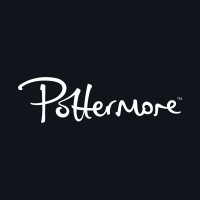I’m on the set of Fantastic Beasts, of course. Wearing a hard hat, a neon yellow safety waistcoat and muddy black boots. Didn’t I tell you showbiz was glamorous?
Now, you know that this movie is set in New York because J.K. Rowling told you months ago with a tweet: ‘Newt only meant to stay in New York for a few hours. Circumstances ensured that he remained... for the length of a movie, anyway.’
The filmmakers looked everywhere in the UK but realised they didn’t have a New York City. So they made one.
I stand on a street corner, stroke a prop wheelbarrow and decide to find out how to make a magnificent replica city so many miles and so many years from the original. Here’s a very big clue: get the best creatives in the business involved.
Legendary production designer Stuart Craig, who worked on the Harry Potter films, heads up the team who built the 1920s New York. He worked with The Davids, director David Yates and producer David Heyman, on the overall aesthetic of this movie. He’s been nominated for ten Oscars and won three (for The English Patient, Dangerous Liaisons and Gandhi). Whenever I ask someone on set about him, they instinctively start whispering out of respect for his genius. More on Mr Craig later.
Right now, I’m standing with set decorator Anna Pinnock, who’s responsible for the New York window dressings, all the props and furniture. Because everyone on this set is offensively talented, Anna’s got an Oscar too – for her work on The Grand Budapest Hotel in 2014. She’s been nominated four times (for Gosford Park, The Life of Pi, The Golden Compass and Into The Woods). She’s worked on three James Bond films, including Spectre. If you need to build a life-size replica city in a place where that city does not actually exist, she’s the woman to do it.
Anna’s as elegantly dressed as me – matching hard hat, neon yellow safety waistcoat and boots – and gives me a tour of the New York she has helped create on a massive lot in the middle of a muddy field.
We start on the Lower West Side where the bricks are filthy, the posters are peeling off the concrete walls and most things are light brown, dark brown or in-between brown. All the signs and posters were designed by extraordinary graphic design double-act MinaLima... But more about them another time.
We didn’t just travel to America without leaving England. We travelled to 1926 without leaving 2015.
Fantastic Beasts is set in the Roaring Twenties and every single detail of the set screams that era. Every shop sign, every newspaper headline, every restaurant menu, every window dressing, every wheel, every food cart, every streetlight. Oh, the streetlights! They’re actual, real, functioning streetlights – great big black structures built eight metres into the ground so they don’t sway or fall on anyone important.
That’s what I love about the way Anna’s decorated New York; she dressed a fake city out of bits and pieces of reconstructed reality. She had an entire team research the era, of course, to make it as authentic as possible. It’s quite something.
There are several cobbled streets, and if you stand in the right spot you can see all the way from the Lower West Side to the Upper East Side.
You can see the outside of Tina and Queenie’s apartment, as well as restaurants, a church and all manner of shops. As Anna tells me, they’ve had to take some of those shop facades down and dress them up as a completely different building very fast when they’ve had a last-minute change in the filming schedule.
The logistics of this job – making a city, destroying that city, making a room, destroying that room – hurt my brain.
Lucky for me, we made it to the interior set of Tina and Queenie Goldstein’s apartment less than an hour before it was taken down. I sat on their beds, stroked their sofa, picked up their books and looked into their mirrors. But I’ll have to tell you about that another time. Right now I’ve got to work out how to get back to 2015 London.


